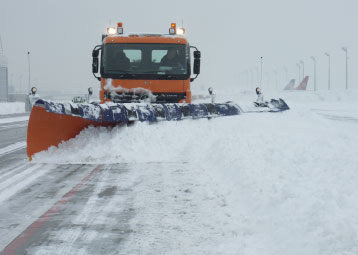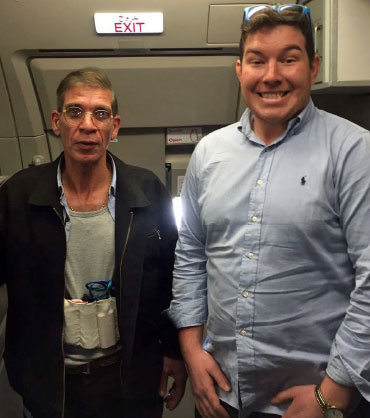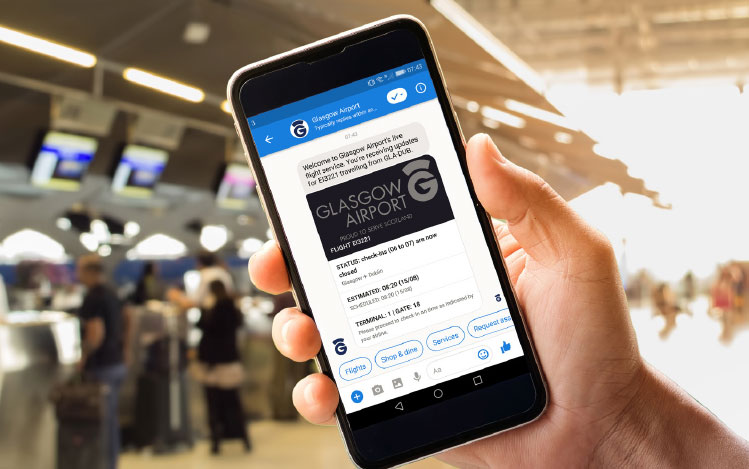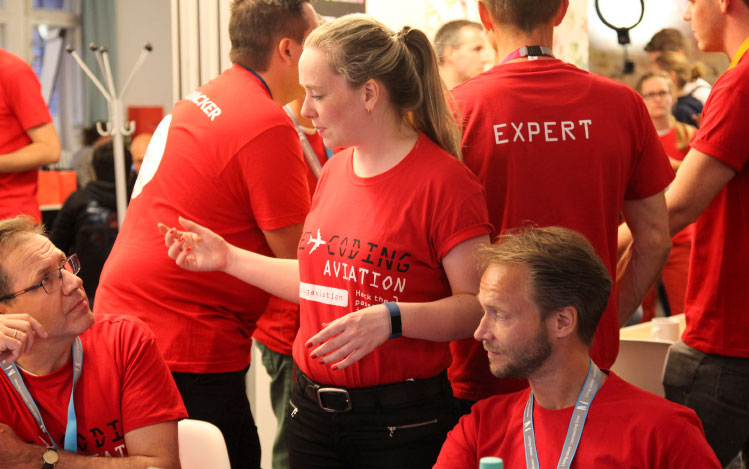As the second decade of the 21st century draws to a close and as he prepares to move on to pursue new challenges, Robert O’Meara looks back at some of the key moments, significant trends and unforgettable changes that emerged and anticipates what’s coming in the 2020s.

More and more airport operators are trying interesting things – using their infrastructure more flexibly and pushing the boundaries of how people think about airports. Finavia having a fashion show on the runway is just one example of this.
After the ups & significant downs of the closing years of the noughties, when everyone’s calendars hit 2010 there was a palpable sense of relief, even if optimism was still in relatively short supply. Air transport is a famously shock-sensitive and cyclical industry, so when signs of an upswing occurred, things moved up a gear again. That said, it took a while for the industry to get its groove back, not least due to the bumpy beginnings of 2010, starting with…
1. VOLCANIC ASH: For anyone working at a European airport or airline at the time, there are a few days in April that will be forever etched in their minds, not least because of how the weather contrasted with the circumstances. On a beautiful, blue sky Thursday afternoon, there was an announcement that an Icelandic volcano – the tongue-twistingly titled Eyjafjallajökull – was pushing plumes of ash into the atmosphere and some talk of this potentially disrupting aviation in that part of the world.
At first, it was just a minor story, but over the course of 26 hours, European mobility broke down, air space by air space, as an untested methodology for analysing the threat of volcanic ash was replicated by civil aviation authorities across the continent.
At its worst moment, the threat of volcanic ash paralysed 313 airports – about 80% of the European airport network. Most of Europe’s airlines didn’t have a single aircraft in the sky at that point, for the first time in over 65 years. More than 10 million passengers affected all had one thing in common – they couldn’t get to where they needed to go.
In many parts of the continent, there wasn’t a cloud in the sky that weekend. It was nothing short of extraordinary – a moment when the positive contribution aviation makes to our lives was suddenly crystal clear to people.
As the centrepoint of air traffic management in Europe, EUROCONTROL became the focal point of the efforts to resolve the crisis and it was an intense few days there with regular calls involving all European States’ Civil Aviation Authorities along with industry. At industry level specifically, ACI EUROPE kept its membership informed, sending updates on how these talks were progressing, allowing them to anticipate developments and further exchanged with their own authorities. One of the key wins for ACI EUROPE was that the financial impact on airport operators (€290 million) was reported alongside that of airlines, for the very first time. More than that, it was a reminder to everyone that surprises can still happen and the next source of disruption is not necessarily something you have seen before.
For Iceland, it marked the beginning of a brilliant campaign to capitalise on the island’s notoriety – one which would see Iceland’s main airport of Keflavik become one of the fastest-growing in Europe over the course of the years to come and a case study of how to build a connectivity campaign.
Volcanic Ash was also the dawn of a new era in which air traffic management and air navigation service providers suddenly became much more visible to media and the public alike. A visibility that would intensify in the years to come.
2. EXTREME WEATHER: If April had seen the decade get off to a heady start, the end of that year brought another moment that would bookend 2010 as an annus horribilus. On 21 December, some of the worst snow in 40 years hit continental Europe with a wallop. Several major airports were heavily affected and things would only get worse in the days to come. In fact, every significant mode of transport found it challenging, but as ever, aviation received the lion’s share of media coverage, for better and for worse. This came along with close scrutiny from the European Commission as to how the most affected airports were performing in terms of resilience. Here again, ACI EUROPE acted as the trusted voice, compiling information and providing explanations for some of the snowball (ahem) effects and the rationale for different levels of winter equipment investment between airports based on their local weather conditions/patterns, costs/opportunity equations… And the usual reluctance of some airlines to see airports spending more money.

On 21 December 2010, some of the worst snow in 40 years hit continental Europe with a wallop. Several major airports were heavily affected and things would only get worse in the days to come.

The unthinkably surreal situation of the hijacker posing for a selfie with one of the hostages, during the EqyptAir standoff at Larnaca Airport in 2016. Just one of a host of extraordinary moments that stunned the world, empowered by the combination of smartphone & social media.
3. SOCIAL MEDIA AND THE RISE OF AIRPORT BRANDS: Those events in 2010 gave airport operators an urgent reason to be on social media channels such as Twitter and Facebook. This opened up a whole new dimension in communication with passengers. Where previously the airport was like a tunnel that passengers went through on their airport experience, now the airport could have a direct and open conversation with them via social media – all of which gave airports all the more reason to invest in their brand and corporate communications.
The words “passenger experience” became very, very prominent and all manner of competitions, surveys and campaigns followed.

Social media became empowered by the smartphone (and its camera) and it changed communications – turbocharging the possibility to share news, photos, thoughts and wisdom on the move.
Captain Sully’s miracle landing on the Hudson in January 2009 had already been a ground-breaking moment – the first example of ‘citizen journalism’ empowered by social media – beating the news media to a story. By the other end of 2010, Twitter had graduated from being a journalist’s ‘police radio’ to become a bonafide story unto itself, with tweets from passengers and visitors to the airport site, written about alongside formal corporate and political statements.
In July 2011, Facebook launched its smartphone app. This is the moment when social media became empowered by the smartphone (and its camera) and it changed communications – turbocharging the possibility to share news, photos, thoughts and wisdom. The Asiana crash in San Francisco in July 2013 was another notable moment, because only minutes after it, a passenger who had emerged from the wreckage tweeted about their survival.
Skip ahead to the EgyptAir standoff at Larnaca Airport in 2016, to the unthinkably surreal situation of the hijacker of a plane posing for a selfie with one of the hostages, who promptly tweeted that. We’re not in Dawson’s Field anymore.
The colour, the speed and the open access nature of an ever-expanding array of communications channels and the accompanying culture of over-communication was something we actively sought to track and learn from, in a series of ACI EUROPE social media & digital reports we published. It also led us to establish a highly successful Digital Communication Forum, allowing our members to share best practices and learn from latest developments in the field. Which brings us to the next point:
4. CRISIS: The events of 2010 alone were enough to make every CEO and Head of Communications in air transport keenly aware that crisis management is paramount, especially in communications. In parallel to the significant investments being made in branding, communications and passenger services, no effort was spared to prepare the necessary contingencies for crises.
This in turn made airport operators take stock of the information available to them, the elements they control on their site versus the elements they influence. It also helped them assess the available tools that could enhance the macro and micro of their vision of operations and the process and procedures that could help prepare them for the next crisis.
5. DISRUPTION & TERROR: While aviation has lived with the shadow of the threat of terrorism for decades, this was a decade that started with the now famous ‘underpants’ bomber, followed by improvised explosive devices in printers and other such incidents. However, 2016 is unquestionably the year that that focus shifted from the airside to the landside area, in the wake of the terror attacks at Brussels Airport and Istanbul-Atatürk.
Aviation security continues to evolve and expand as new threats emerge and potential solutions are assessed. Massive strides have been made to streamline the security experience at airports, not least in the rollout of higher performance 3D scanners at a growing number of European airports, making the process less of a hassle for the passenger. However, the emergence of cybersecurity risks and the threat of drones and other lo-fi technologies being used to disrupt airport operations – these and new threats will be things to watch in the decade to come.
6. ADDRESSING THE DATA VACUUM: As airport operators got to converse with passengers on social media, they wanted to gain insights into what their passengers really want – some early ways to do this were crowdsourcing ideas for innovations (essentially, a digital suggestion box) and new routes, conducting surveys on social about retail and other aspects. Airports also invested heavily in smartphone apps – to give passengers the information they needed and learn from users’ interactions with the apps.
On the operations side, data-driven processes such as Airport-Collaborative Decision-Making went from being live at a small number of airports, to enjoying much wider implementation, resulting in more timely information that benefited operations.
And it wasn’t just in terminal – over the course of the decade, data has gone from being about benchmarking performance to being about everything, its value now famously eclipsing that of oil.
Hackathons became popular, within the various strands of aviation. Fittingly, in December this year, ACI EUROPE will end the decade by organising the groundbreaking Digital Sky Challenge with SESAR, Athens International Airport and a host of other aviation stakeholders. The event will bring together coders from all over Europe to dream up the data-driven solutions of tomorrow.

Hackathons became popular, within the various strands of aviation. Fittingly, in December this year, ACI EUROPE will end the decade by organising the groundbreaking Digital Sky Challenge with SESAR, Athens International Airport and a host of other aviation stakeholders. The event will bring together coders from all over Europe to dream up the data-driven solutions of tomorrow.
7. DAWN OF THE DIGITAL ERA: Those smiley faced buttons at various points in the airport, the ibeacons, the moving advertising screens, the near-field communication technologies – these all rolled out in the past decade, but we are only in the early stages of the digital transformation of airports – the prelude to a very exciting time. As remote tower technology, SESAR and other new technology solutions are deployed and the internet of things becomes more prevalent, digital will come to play a much bigger role in operations. And the emergence of drone taxi technology, vertiport functionality and more will make this all the more exciting.
8. SENSE OF PLACE/EXPANDING THE PERCEPTION OF THE AIRPORT SPACE: In a decade when travel went beyond going somewhere and became just as much about communicating where you were going, airports quickly understood that ‘sense of place’ could inform and enhance their brand, their interaction with the passenger and their place in the local narrative. This can start with simple ideas like selling local produce on the airside and retaining some display spaces to showcasing local artists or upcoming events in the region. Broader, unusual ideas can gain surprising traction as well. The success that Aeroporto di Bologna’s Lamborghini “Follow Me” car enjoys is a fun example of this – putting a smile on the faces of passengers, personnel, social media audiences and locals alike and subliminally underlining the airport’s role in connecting Italy’s motor valley to the wider world. Let’s see more partnerships like this one please!
This was also the decade when public spaces became places of celebration for ‘flash mobs’ and airport operators would explore the possibilities for more agile use of space. More and more airport operators are trying interesting things – using their infrastructure more flexibly and pushing the boundaries of how people think about airports. Finavia having a fashion show on the runway, Groupe ADP hosting yoga sessions and music festivals (inside and on the tarmac too), daa showcasing the Irish creative community are just a few examples of this.
9. OVERTOURISM – THE FLIP SIDE OF CONNECTIVITY: The confluence of experientially-inclined millennials, affluent Gen X-ers and a burgeoning ‘grey economy’ of boomers – as well as an extremely upwardly mobile Asian population with a growing sense of wanderlust – have been a boon to tourism all over Europe. However, in recent years, the flip side of all of this connectivity and focus on city-tourism has begun to show. Overtourism, a word reportedly dreamed up by travel media company, Skift, is now a very real concern for numerous European cities.
With sustainability now firmly a political and civic priority, the decade to come will surely bring questions, ideas and fresh thinking on how cities, regions and countries can better manage the growth that airports help secure, which brings us to the final topic:
10. FLIGHT SHAME: Flight Shame brings together nearly every strand mentioned in this piece – it is highlighting the effects of extreme weather and their implications for humanity, it is a movement that has been empowered by social media, the disruptive potential of the protests and activism require nimble, crisis-agile response, data is providing insights into its impact and digital solutions such as those being developed and deployed by SESAR are part of the answer to making air transport less polluting.
At the start of the decade ACI EUROPE had just developed and launched Airport Carbon Accreditation, engaging airports to address their carbon footprints and invest in lower/zero emissions technologies to reduce their impact on the environment. That programme went on to be adopted and implemented in all ACI regions across the globe. Today, 44 European airports are operated by carbon neutral operators and another 103 are carbon accredited at the other levels of Airport Carbon Accreditation. The decade to come will see them work on their promise to become NetZero for their carbon emissions by 2050 (or even 2030 in some cases) – a commitment now undertaken formally by ACI EUROPE and undersigned by close to 200 individual airports.
On a personal note, all of these developments in the airport industry over the past 12 years have made my work in communications for ACI EUROPE all the more stimulating and rewarding. Thank you to all the inspiring and talented airport people who contributed to that! I expect that my successor will have an equally interesting time, as the pace of change accelerates. And even though I am moving on to pastures beyond air transport, I shall always see airports as the ultimate theatre of life. Happy landings (and take-offs!).







